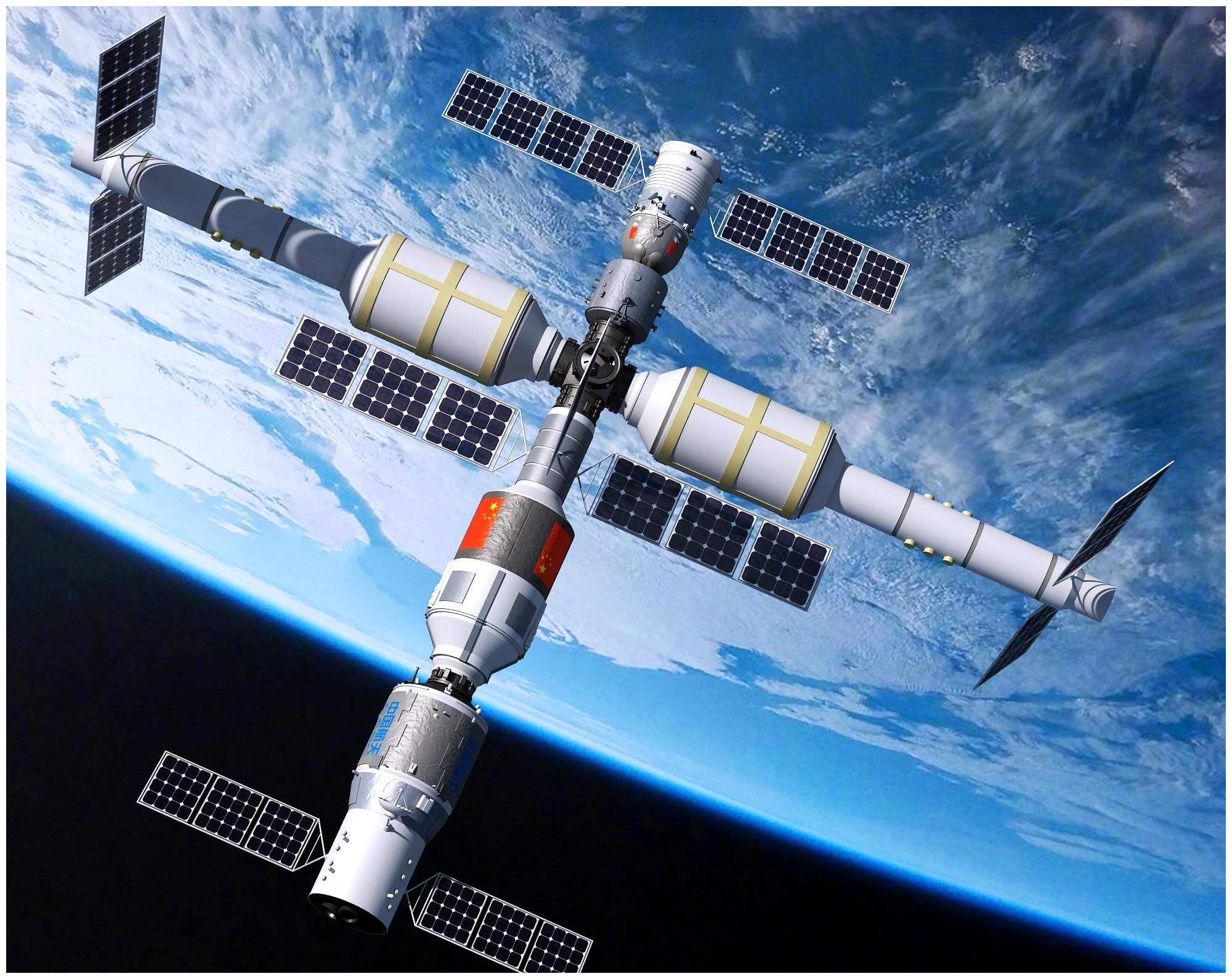The world’s top ten aerospace powers, ranked as the strongest national aerospace level globally.
1. United States (U.S.):
The United States holds the distinction of being the pioneer in space exploration. It has consistently remained at the forefront of global space activities in terms of scale and technological advancement. Many of its scientific achievements have marked significant milestones in the human spaceflight industry. Notably, the United States is not only a leader in traditional aerospace technology but has also experienced rapid growth in commercial aerospace in recent years. The nation’s approach to space development is characterized by a balanced and complementary focus on both military and civilian applications, fostering seamless integration within the aerospace sector. According to data released in 2018 by the authoritative American think tank CSIS (Center for Strategic and International Studies), the U.S. aerospace research funding accounts for approximately 56.6% of the world’s total, securing its top-ranking position.
2. China:
China’s aerospace industry traces its roots back to 1956. Over the years, it has achieved remarkable milestones in manned spaceflight, lunar exploration, Mars exploration, solar exploration, the Tiangong space station, Long March series of launch vehicles, and the Beidou navigation system, positioning the country as one of the major aerospace powers. Following the decommissioning of the International Space Station, China’s Tiangong space station emerged as the sole space station in operation, transforming into a core platform for global human space research and paving the way for the global space industry. CSIS data from 2018 indicates that China’s space research funding constitutes approximately 8.2% of the world’s total, placing it second in the global rankings.
3. Russia:
Russia’s significant contributions to aerospace technology lie in the domain of high-thrust launch vehicles, an essential element for human space exploration. As one of the world’s top ten aerospace powers, Russia retains a prominent position with its vast expertise in aerospace technology, built upon the legacy of the Soviet Union’s past achievements. Notably, the Soviet Union was once a global aerospace powerhouse. As per CSIS data in 2018, Russia’s space research funding accounted for about 5.9% of the world’s total, ranking third worldwide.
4. France:
France holds the status of a developed country in the aerospace industry and is a major member of the European Space Agency, headquartered in Paris. Post-World War II, France achieved relative independence in both nuclear and aerospace technologies. While France may not have its own global satellite navigation system, it plays a crucial role in launching satellites for the European Galileo system through French rockets. The Kourou Space Center in France is renowned worldwide for its ideal geographical location for satellite launches. Moreover, France’s satellite manufacturing capacity is among the highest globally, exporting large-capacity high-end communication satellites with significant profit margins.
5. Germany:
Germany boasts the largest aerospace industry in Europe. Prior to World War II, its aerospace technology was ahead of its European and even global counterparts. Notably, the V-2 rocket was a masterpiece of its time. Despite the challenges after World War II, German experts persevered and regained prominence in the field. As of 2018, Germany accounted for 11.81% of the global aerospace export share, ranking second only to the United States and France. The German government’s commitment to aerospace technology development has created an environment conducive to growth, making it one of the top ten aerospace powers worldwide.
6. United Kingdom (U.K.):
While the United Kingdom is not currently considered among the top echelon of aerospace powers globally, its journey in the aerospace field began in the 1960s. It has achieved cutting-edge research, development, and manufacturing capabilities, placing it at the forefront of aerospace advancements in Europe and the world. The UK’s space industry has experienced remarkable growth, with the number of space companies increasing by over 65% since 2016. In 2019, the annual output value of the British space industry exceeded 16.4 billion pounds, accounting for approximately 6% of the global space market share, with projections to reach 10% by 2030. The British government’s release of its first national space strategy in September 2019 underlines its commitment to further growth in the aerospace sector.
7. Japan:
Japan’s aerospace technology is often seen as part of the second echelon on the global stage. Although not considered a superpower in aerospace, Japan possesses considerable strength in the field. The country has successfully launched various satellites, but it faces challenges due to its historical constraints as a defeated nation and limited independent development and innovation capabilities compared to nations like China and Russia. Japan also lacks large-scale launch vehicles akin to China’s Long March 5. Nonetheless, Japan’s aerospace technology remains superior within Asia, placing it at the forefront of regional advancements.
8. Canada:
Canada excels in several key branches of the aerospace industry, notably space robotics, earth observation, space technology, detection, and satellite communications. Among these, space robotics stand out, with the Canadian manipulator “Canada Arm 2” recognized as a world leader among space manipulators utilized on the International Space Station. The Canadian Space Agency’s participation in the “Artemis Agreement” in 2020 marks its involvement in the US moon landing project, underscoring Canada’s position as a significant player in the aerospace arena.
9. India:
India’s aerospace industry received initial technical assistance from the Soviet Union, allowing it to develop its capabilities in manufacturing and launching launch vehicles, artificial satellites, ground control, and recovery systems. The nation has built a comprehensive space research and development system, bolstered by a relatively rich technical reserve and a solid foundation. On the global scale, India’s aerospace technology occupies the second echelon, but within Asia, it stands in the top echelon, surpassing countries like South Korea and Israel in terms of technological prowess.
10. Brazil:
In the southern hemisphere, Brazil stands out as the country with the strongest aerospace technology, encompassing rockets, satellites, spacecraft, and launch sites. The Brazilian government places space activities at the forefront of its priority development areas, aspiring to become one of the world’s space powers in the future. Brazil has established fruitful cooperation agreements with various countries, including Russia, France, Germany, and the United States. Notably, the “China-Brazil Earth Resources Satellite” developed in collaboration with China holds significant importance in Brazil’s space research initiatives.
Research Statement:
The list provided here is compiled based on historical achievements, contemporary progress, research funding, number of researchers, global reputation, technological advantages, historical evolution, and other relevant indicators. The rankings serve for entertainment and reading purposes, and they are not exclusive or definitive. The editors at dpfs.net welcome additional contributions and discussions in the comment area.

